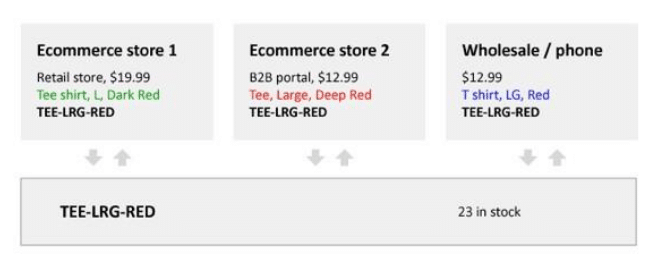What is an SKU? Understanding SKUs – Meaning and Guide
Good product management starts with unique SKUs. But what are they? And how do you create them? This white paper helps you understand SKUs—from how they work to what makes them so essential to retail and wholesale success.
Mục lục bài viết
What you’ll learn:
- What is an SKU number?
- What SKU stands for
- What your business will gain by using SKUs
- The benefits of character and numeric SKUs
- When and how to create your own SKUs
- How SKUs relate to UPCs and EANs
- Answers to the perennial question, “what are SKUs?”
- And more
Introduction
If you’re like most retailers and wholesalers, you have a lot of money invested in stock, which sits at the center of your sales, purchasing, and inventory processes. This makes keeping careful track of that stock as you grow essential to your business’ ongoing success.
A SKU, which stands for Stock Keeping Unit, is a unique identifier for each of your products that makes it easier to track inventory. SKUs are vital tools for retailers and wholesalers, allowing them to identify products and monitor stock levels across systems and channels. Your success depends on good product management. And good product management depends on SKUs.
What is a SKU number?
Every product you sell needs a unique identifier—called a stock keeping unit (SKU)—that helps you differentiate one product from another. It’s not enough to have one SKU for a t-shirt, for instance. Each variant of a product should have different SKUs. In the case of the t-shirt, you’d need a unique SKU code for different colors and sizes.
These distinct codes tell your staff, customers, suppliers, and systems that they’re talking about the same item. You may also hear SKUs called product codes, part numbers, and manufacturer’s part numbers. An SKU isn’t only for a physical product either – you might want to assign them to other things you offer, like warranties, for instance.

Why use SKUs?
When it comes to inventory management, there are few concepts more important than SKUs. They help you:
- Streamline ordering. When you place purchase orders with suppliers, you’re more likely to get the products you want if you use the SKUs on their price lists and order forms. Also, if you integrate your inventory management software with your suppliers’ systems, you need to use SKUs when you hit reorder points. These common reference numbers ensure both systems are talking about the same products.
- Simplify e-commerce and multichannel integrations. Where SKUs really pay off is when separate software systems are integrated. If, for example, you integrate your e-commerce and ordering systems, you need a single identifier for each product—in each of its variations—to make sure exactly the right product is shipped to the customer.
- Keep all systems up-to-date. When you update the inventory level of a product in your master product database, all systems need to be updated, too. To automate this, all systems need to use the same identifier for each product.
- Expedite business sales. Business customers often quote part numbers or SKUs when they buy. This speeds up their orders and helps reduce mistakes.
- Easily handle terminology differences between systems. Often, the same SKU has different details in each channel you sell in. The large red t-shirt in the example below (SKU “TEE-LRG-RED”) has different descriptions in each of the three systems—making a consistent SKU system indispensable in linking the product data.












